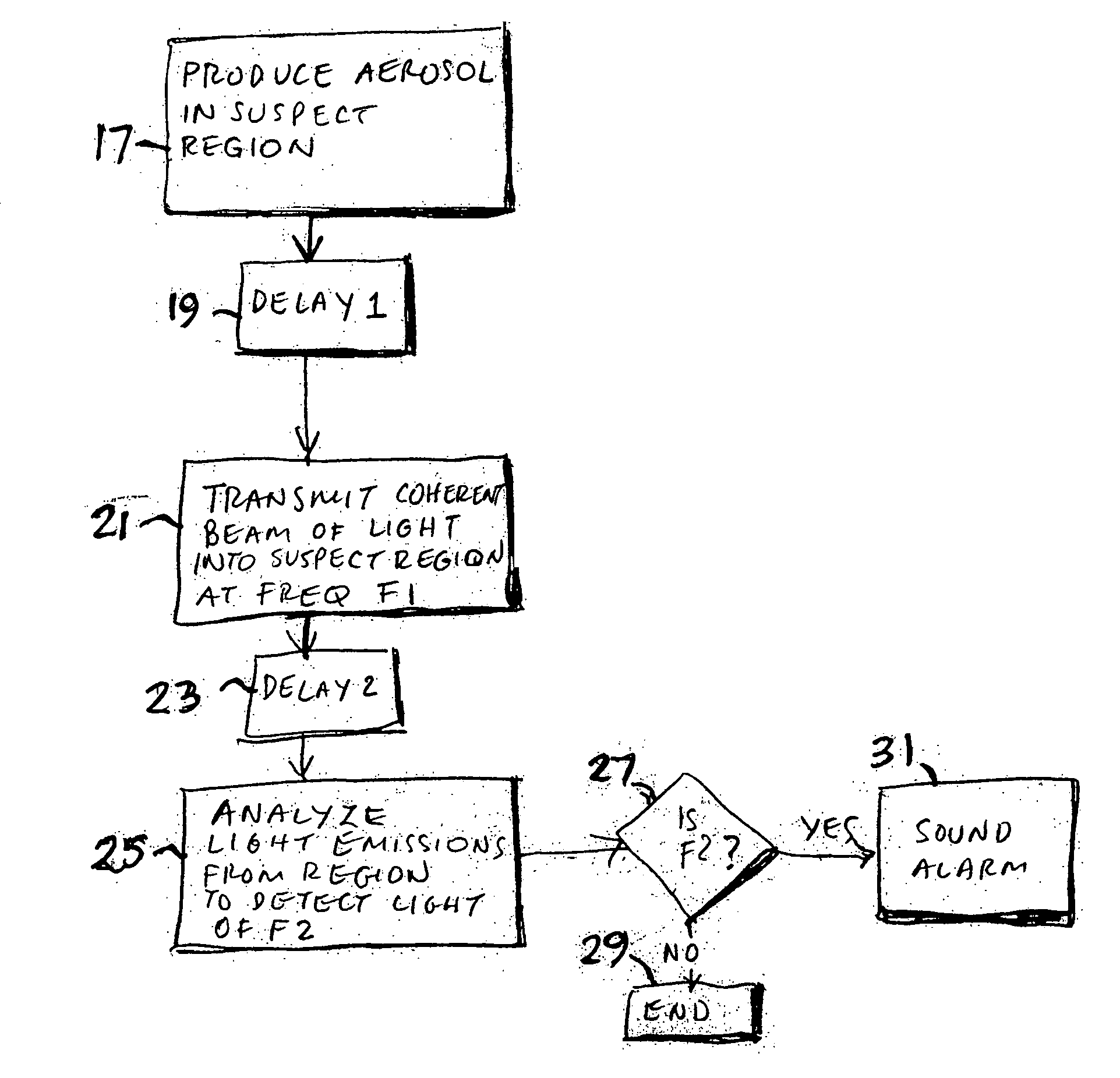Aerosol-based detection of biological agents
a biological agent and aerosol technology, applied in the field of biological warfare defense systems, can solve the problems of no good method known for remotely and directly detecting the presence of aerosolized biological agents may settle out of suspension and deposit on the surface, and the death rate is just as high, so as to achieve significant durability, low false alarm rate, and high specificity
- Summary
- Abstract
- Description
- Claims
- Application Information
AI Technical Summary
Benefits of technology
Problems solved by technology
Method used
Image
Examples
Embodiment Construction
[0018] The pictorial of FIG. 1 illustrates the interaction between an unmanned airborne vehicle (“UAV”) 1 and a cloud 3 of an aerosolized bioagent, such as Anthrax, located at some distance, say five to ten km, from a group of military personnel, not illustrated, who are the intended target for the toxic cloud. The UAV is a radio-controlled unmanned aircraft, such as the much publicized “Predator” aircraft manufactured by the General Atomics company, that was additionally fitted with a radio-controlled (“RC”) sprayer 5, depicted on the underside of the UAV, an RC controlled laser 7 and an RC computer-controlled spectrometer 9. The UAV and the on-board equipment is controlled by the military personnel from a ground station 11. Such aircraft typically also include a television camera and associated TV transmitter, not illustrated, to broadcast television pictures to that ground station, and a global positioning system receiver (“GPS” receiver) and transmitter to broadcast position inf...
PUM
 Login to View More
Login to View More Abstract
Description
Claims
Application Information
 Login to View More
Login to View More - R&D
- Intellectual Property
- Life Sciences
- Materials
- Tech Scout
- Unparalleled Data Quality
- Higher Quality Content
- 60% Fewer Hallucinations
Browse by: Latest US Patents, China's latest patents, Technical Efficacy Thesaurus, Application Domain, Technology Topic, Popular Technical Reports.
© 2025 PatSnap. All rights reserved.Legal|Privacy policy|Modern Slavery Act Transparency Statement|Sitemap|About US| Contact US: help@patsnap.com


